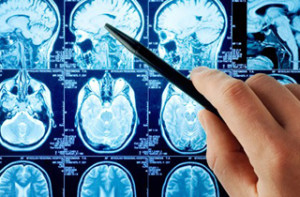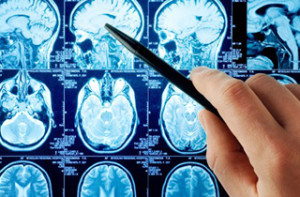Contact Us




 There is no single test to detect dementia; there are different methods that specialists use to help make a dementia diagnosis. The aim of getting a diagnosis is to test –
There is no single test to detect dementia; there are different methods that specialists use to help make a dementia diagnosis. The aim of getting a diagnosis is to test –
a) if a person has dementia and
b) what type of dementia they may have.
Importance of getting a diagnosis at an early stage
The early signs of dementia can be very subtle and vague. Often, symptoms develop gradually and go overlooked for a long time. Even when they notice the symptoms, families fail to realize that these symptoms indicate that something isn’t right. They often wrongly assume that such behaviour is a normal part of the ageing process. Stigma is another reason that stopped people from seeking a diagnosis or treatment options.
One needs to go through a timely assessment for possible dementia in order to rule out other conditions that may have similar symptoms to dementia. The benefits of an early diagnosis are:
Getting a Diagnosis of Dementia
Dementia is an umbrella term, within which there are different types of dementia. The symptoms of the types vary depending on the cause and the area of the brain that is affected.
If the outcome of the assessment is a diagnosis of dementia, it is important that the type of dementia is also diagnosed. As knowing the dementia type will help to understand symptoms, it also helps in predicting how the dementia might progress and will also guide in its management.
The professionals who are likely to be involved in the testing are:
Techniques used for Diagnosis
1) Personal history – The doctor usually spends some time talking about the person’s medical history and gathering information about the changes in memory and thinking.
2) Medical history – This includes questions about family history of dementia, prior illnesses, previous injuries and surgeries, and present chronic conditions. This will act as a guide to find other possible causes for dementia-like symptoms.
3) Medication history – The doctor will also ask questions about allergies, side effects from past medications, and a list of current medications and dosages. This can also help in any future prescription decisions. This may also disclose a medication interaction (i.e. when two or more medications work against each other) or over dosage that can account for confusion and other dementia-like symptoms.
4) Physical examination and laboratory tests – The signs of dementia can be due to a number of other possible causes, such as vitamin deficiency, infection, metabolic disorders and side effects from drugs. These other causes are often easily treated. Therefore, an early step in diagnosing dementia is to rule out these causes through a physical examination, blood tests and urine tests.
Routine laboratory tests used in the diagnosis of dementia includes blood tests to investigate anaemia, infection, vitamin B12 deficiency, thyroid function, urine tests.
5) Cognitive & Neuropsychological tests – Assessment of cognitive functions such as memory or language can be done using verbal and written tests or questionnaires (for example, asking the person to recall words or to name objects). This will help to establish the extent of difficulties, to track changes in the person’s cognitive abilities, and to assess the person’s preserved abilities.
6) Mini-Mental Status Examination (MMSE) – MMSE is usually conducted by a specialist which takes only few minutes to complete. The MMSE is the most common test for the screening of dementia. It evaluates skills such as reading, writing, orientation and short-term memory.
7) During the mini mental status examination, a health specialist asks a patient a series of questions designed to test a range of everyday mental skills. This test usually involves tasks as having the person tell what day and year it is, repeat a series of words, draw a clock face activity and counting backwards.
8) Brain imaging techniques – Various brain-imaging techniques are used to show brain changes and to rule out other conditions such as tumour, infarcts (strokes – dead areas of brain tissue) and hydrocephalus (fluid on the brain).
9) Computed Tomography Scan (CT Scan) – This technique involves taking many X-rays from different angles in a very short period of span. These images are then used to generate a three-dimensional image of the brain. CT scans are mainly used to rule out other causes of dementia such as stroke, brain tumour, multiple sclerosis or hemorrhage.
10) Magnetic Resonance Imaging (MRI) – This technique uses magnets and radio waves to generate images of the brain from multiple angles and provides a detailed view of the brain structure not generally visible through a CT scan. MRI helps in ruling out a diagnosis of dementia and the type of disease causing the dementia. MRI also helps in providing detailed information about the blood vessel damage that occurs in vascular dementia. It also shows shrinkage in specific areas of the brain.
11) Functional MRI (fMRI) – This is a newer version of MRI. Functional magnetic resonance imaging is a type of brain scan that uses magnetic fields and radio waves to produce an image of changes in blood flow in your brain in response to stimuli or actions.
12) Positron Emission Tomography (PET) – PET scan is an imaging test of the brain. It uses a radioactive substance called a tracer to look for disease or injury in the brain. A PET scan display how the brain and its tissues are functioning. MRI and CT scans show the detail about the structure of the brain, but are unable to determine anything about its function. PET imaging can help physicians detect functional abnormalities early in the course of the disease, before anatomical changes occur.
13) Single-Photon Emission Computerized Tomography (SPECT) – In this test as well, a small amount of radioactive material is injected into the patient. PET provides visual images of activity in the brain. SPECT is used to measure blood flow to various regions of the brain.
We at Samvedna Care aim to help seniors live happy, active and independent lives, in the comfort of their home and community through interactive caregiving.
Samvedna Care was established in October 2013 with two complementary goals – firstly to provide quality home care services to seniors with limited mobility or dementia and hence social interaction, and secondly to facilitate stimulating community interaction and participation.
Our Dementia Care services are –
At-home services –
Dementia intervention activities by trained Care Specialists (already mentioned above). These services are available in Delhi NCR
More – https://www.samvednacare.com/service/dementia-care
Please call us for more info – Delhi NCR – 98184 21446, 124 4229659
Dementia Support Group –
Our Dementia Support group in Delhi NCR and Guwahati is a platform for caregivers to share feelings and support each other.
Please call us for more info – Delhi NCR – 98184 21446, 124 4229659 | Guwahati – 9864015872
Cognitive Wellness Programme, Sector 57 Gurgaon –
Samvedna’s Cognitive Wellness Programme is designed for seniors with mild cognitive impairment, early dementia or Parkinson’s, and elderly lacking in enthusiasm and motivation. The aim is to stimulate the mind of the elderly to slow the progression of the disease or impairment. The sessions are 3 days a week, 11AM-1PM.
General Wellbeing:
With our General Well Being Services we aim to raise the quality of life of seniors, specially those who may have limited mobility and social interaction due to various constraints. Our interactive programme keeps them active and engaged through physical, mental and social activities, all in the comfort of their home.